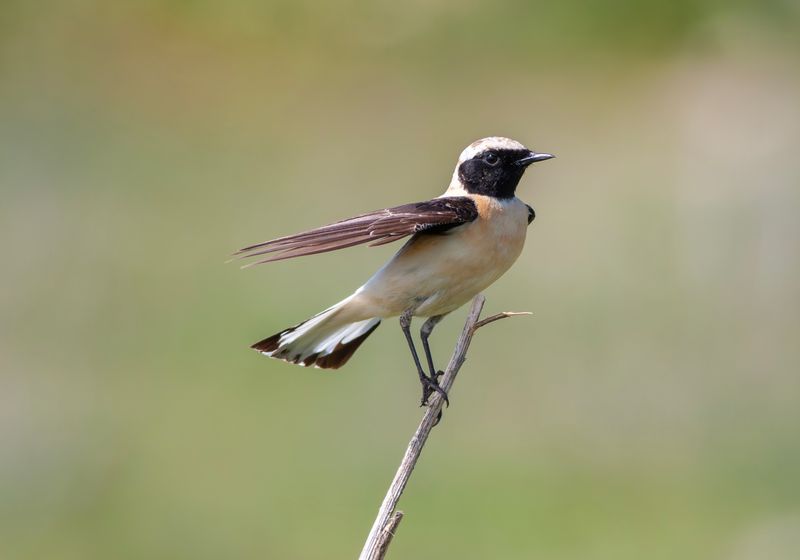The black and white plumage coloration in different species of the wheatear songbirds is linked to multiple genetic variations near a single gene.
Birds have a dazzling display of patterns, from muted colors to vivid and striking hues. For a long time, scientists believed that the evolution of these traits was a slow process that took place when mutations gradually accumulated. But recent studies have shown that reshuffling of already existing genetic variation, either within a species or through hybridization between species, could produce these traits faster.1,2
However, the exact interplay between this genetic reshuffling and the evolutionary history of plumage coloration leaves much to be explored. This motivated evolutionary ecologist Dave Lutgen from the University of Bern to study this. He used the wheatear (genus Oenanthe) songbird, characterized by black and white patterns and extensive hybridization, as a model for understanding how genetic variant combinations drive phenotypic diversity.
Now, Lutgen and his colleagues found that subtle genetic variations influence the striking color differences in the plumage of four wheatear species, with the key players located near a gene that controls feather color. Their findings, published today in Science suggest that combinations of these variants contributed to convergent plumage evolution across wheatear species.3
Wheatears’ black and white patterns are displayed along the throat, neck, and mantle (upper middle back) and vary among species. To delve into this, the team first focused on the throat coloration. They conducted a genome-wide association study on 335 birds, which included white- and black-throated wheatears.
They pinpointed five specific genetic variations, or single-nucleotide polymorphisms (SNPs), located on chromosome 20. These SNPs clustered near the gene encoding agouti signaling protein (ASIP), which regulates melanin production and, in turn, plumage color.
Because ASIP-driven color differences are usually controlled by gene expression levels rather than amino acid changes, the researchers searched for nearby genetic switches. Their hunt led them to a long-terminal repeat, a genetic regulatory element located next to ASIP, that can boost ASIP expression.
Upon digging deeper, they found that a white-throated (O. pleschanka) and a black-throated wheatear (O. melanoleuca) shared the same set of DNA variations in this region, hinting that other genetic factors must be involved. The team identified additional SNP variants linked to the mantle and neck coloration, which appeared to have an additive effect: More “white” variants were needed at these loci to produce a white mantle. These findings highlight the complex interplay of genetics that drives striking color differences across the wheatear species.
Next, the team traced the evolutionary history of these traits. Population genetic analysis suggested that white throat and mantle coloration first evolved in O. melanoleuca and then spread across species. Both traits crossed and hybridized into O. hispanica, while only the white throat coloration appears in O. pleschanka. These shifts likely helped the birds exploit different foraging niches, giving them an ecological edge.
Overall, these findings showcase how multiple ASIP-related variants collectively paint the black-and-white gradients of plumage, helping its evolution take flight across wheatear species.

